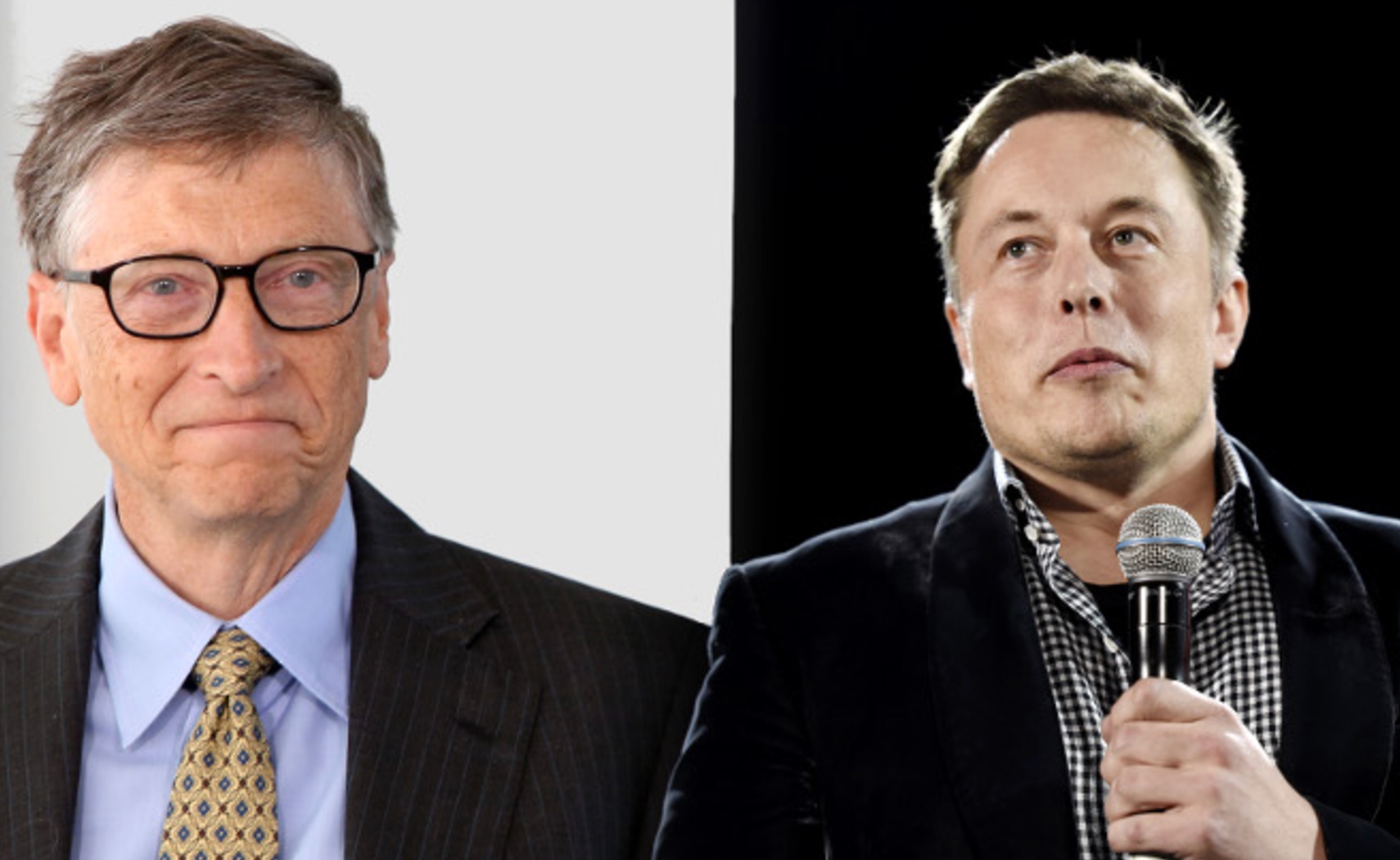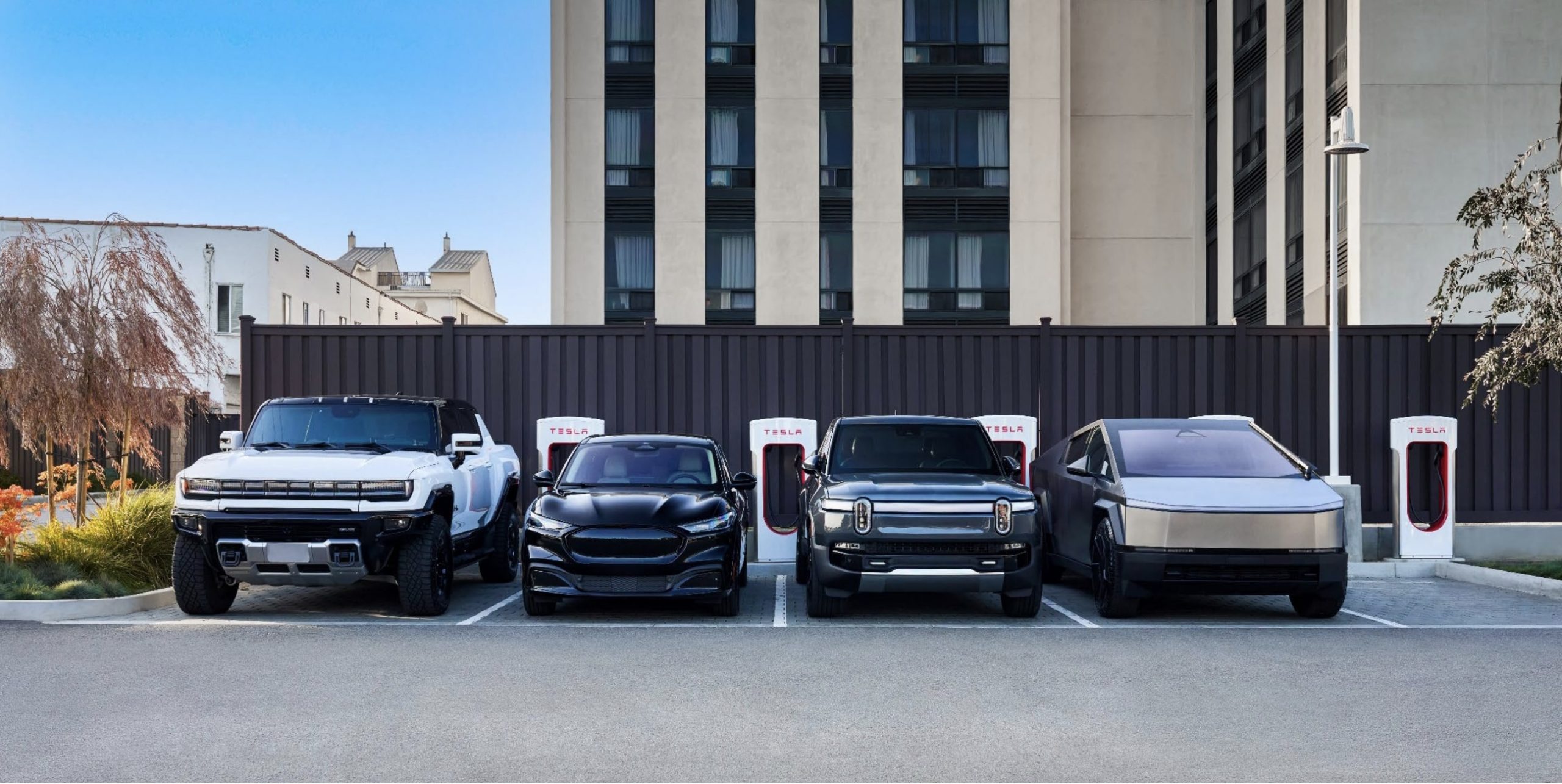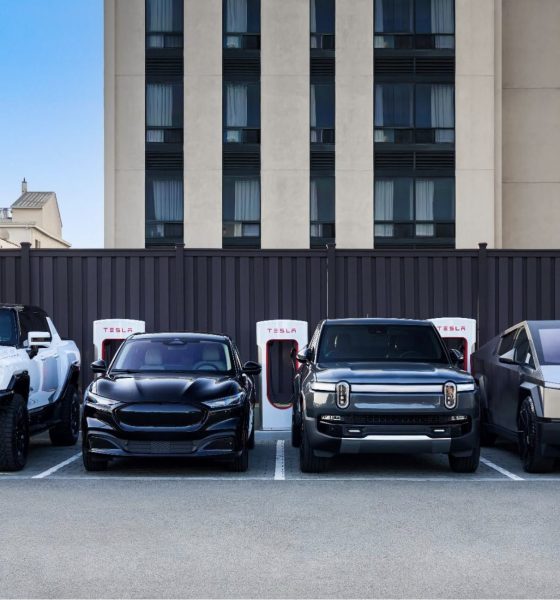U.S. President Donald Trump formally launched tariffs on imports from Canada, Mexico, and China over the weekend, a decision that is widely expected to have sweeping implications for Tesla, other automakers, and a broad range of other industries.
The Trump administration announced the news on Saturday, effectively establishing a 25-percent tariff on Canadian and Mexican imports as well as a 10-percent tariff on products from China. The tariffs will go into effect on Tuesday, and they have already caused ripple effects and a larger trade war with some of the companies.
Canada Prime Minister Justin Trudeau and Mexico President Claudia Sheinbaum spoke on the phone over the weekend, and while Sheinbaum hasn’t yet formalized or disclosed plans for counter-tariffs, Trudeau announced some on Saturday evening, according to Reuters. In the announcement, the Prime Minister said that Canada with also establish a 25-percent tariff on $155 billion worth of products from the U.S.
Trudeau has said that the government will release an updated list of products and tariff details, though the initial list included products such as certain appliances, beer, wine, lumber and other goods. He also says that the government plans to start with $30 billion on Tuesday, as followed by the additional $125 billion later this month.
The Trump administration says the tariffs are aimed at “addressing an emergency situation” related to the import of illegal drugs including fentanyl, along with pointing the blame at illegal immigrants.
“President Trump is taking bold action to hold Mexico, Canada, and China accountable to their promises of halting illegal immigration and stopping poisonous fentanyl and other drugs from flowing into our country,” the White House writes on its fact sheet dedicated to the order.
You can see the full fact sheet from the White House here, or check out the full executive order here.
Tesla joins group of automakers suing EU for EV tariffs from China-built cars
READ MORE ON U.S. PRODUCTION: Tesla Texas lithium refinery produces its first spodumene
Trump follows up, auto workers weigh in on how tariffs will affect the industry
On Sunday, Trump also followed up with a post on his Truth Social account in response to criticism:
The USA has major deficits with Canada, Mexico, and China (and almost all countries!), owes 36 Trillion Dollars, and we’re not going to be the “Stupid Country” any longer. MAKE YOUR PRODUCT IN THE USA AND THERE ARE NO TARIFFS! Why should the United States lose TRILLIONS OF DOLLARS IN SUBSIDIZING OTHER COUNTRIES, and why should these other countries pay a small fraction of the cost of what USA citizens pay for Drugs and Pharmaceuticals, as an example? THIS WILL BE THE GOLDEN AGE OF AMERICA! WILL THERE BE SOME PAIN? YES, MAYBE (AND MAYBE NOT!). BUT WE WILL MAKE AMERICA GREAT AGAIN, AND IT WILL ALL BE WORTH THE PRICE THAT MUST BE PAID.
Following a repost of Trump’s words on X, community notes pointed to a TD Economics saying that the U.S. has had a trade surplus with Canada for the last sixteen years straight when not including the energy sector, or oil, natural gas and electricity.
Multiple others have weighed in on how the tariffs could affect the industry at large, highlighting the potential for price increases for the consumer, potential layoffs, and some even saying that it will shut the auto industry down altogether.
In a report from Bloomberg on Sunday, Flavio Volpe, the President of the Canada Automotive Parts Manufacturers’ Association, said that he doesn’t think the country’s auto parts makers will be able to remain profitable with the tariffs in place.
“The auto sector is going to shut down within a week,” Volpe said. “At 25 percent, absolutely nobody in our business is profitable by a long shot.”
Others have warned of even more immediate effects, especially for Canadian and Mexican cities and states whose communities rely heavily on automotive manufacturing. One such city includes Windsor, Ontario, where John D’Agnolo, the union president of a local Ford factory there, says substantial numbers of layoffs could be imminent.
“We’re talking about thousands and thousands of jobs being lost,” D’Agnolo said. “We’d truly be a ghost town, here in Windsor, if we lost this type of business.”
Ontario Premier Doug Ford has also warned that it could affect as many as 500,000 jobs across the province, which is Canada’s most populated, with many of those being automotive roles.
Many also expect the increased costs to be passed onto the consumer, though it’s still unclear exactly what the repercussions of the tariffs could be. We could also see businesses absorb some or all of these costs, though some initial research seems to suggest that buyers will see higher sticker prices across the industry.
“It is going to be a lot of impact,” Aruna Anand, chief executive officer of parts supplier Continental AG’s North American business, said in an interview. “The question is who is absorbing the price and it becomes, are we able to absorb that price or is it going to be shifted to the end consumer?”
In a separate report from Reuters on Saturday, it was suggested that automakers such as General Motors (GM) and Toyota could, however, shift more production from overseas factories to those in the U.S., while major aluminum manufacturer Alcoa is considering re-routing plans that could potentially reduce tariffs. Many electric vehicle (EV) battery materials also come from metal mining operations in China, with some of these sectors just beginning to emerge domestically.
Others also report that the move could “undermine competitiveness” in the American auto industry, ultimately increasing the cost of building cars in the U.S.
“Our American automakers … should not have their competitiveness undermined by tariffs that will raise the cost of building vehicles in the United States and stymie investment in the American workforce,” says Matt Blunt, the President of the American Automotive Policy Council, which represents Stellantis, GM and Ford.
During Tesla’s Q4 earnings call last week, Chief Financial Officer Vaibhav Taneja also warned that tariffs could affect profitability for the company, since its all of its production facilities utilize parts from around the globe.
“There’s a lot of uncertainty around tariffs,” Taneja said. “Over the years, we’ve tried to localize our supply chain in every market, but we are still very reliant on parts from across the world for all our businesses. Therefore, the imposition of tariffs, which is very likely, will have an impact on our business and profitability.”
It’s still not quite clear at this time how the tariffs may affect Tesla’s prices. While Tesla has regularly advertised having the “most American-made cars” with final assembly for the market taking place at its factories in Texas and California, the company also gets a significant amount of components from Canada.
In a filing with the National Highway Traffic Safety Administration (NHTSA) in October, Tesla did disclose what percentage of its vehicle parts are made in either Canada or the U.S., as compared to other countries such as Mexico and Japan. Some of the figures also don’t disclose where the remaining amounts come from, though they can give users an idea of how many components come from Mexico compared to either the U.S. or Canada.
You can see that data for Tesla’s vehicles below, though it’s also worth noting that it does not show the ratio of U.S. to Canadian parts—just a combined percentage from the two countries. You can also view the full filing from the NHTSA here.
- Cybertruck: 65 percent from U.S. and Canada; 25 percent from Mexico
- Model 3 Long Range: 75 percent from U.S. and Canada; 20 percent from Mexico
- Model 3 Performance: 70 percent from U.S. and Canada; 20 percent from Mexico
- Model Y (all trims): 70 percent from U.S. and Canada; 25 percent from Mexico
- Model S: 65 percent from U.S. and Canada; 20 percent from Mexico
- Model X: 60 percent from U.S. and Canada; 25 percent from Mexico
What are your thoughts? Let me know at zach@teslarati.com, find me on X at @zacharyvisconti, or send us tips at tips@teslarati.com.
Tesla Mexico nearshoring concerns brought up by CMIC presidential candidate
Need accessories for your Tesla? Check out the Teslarati Marketplace:

Elon Musk
Delaware Supreme Court reinstates Elon Musk’s 2018 Tesla CEO pay package
The unanimous decision criticized the prior total rescission as “improper and inequitable,” arguing that it left Musk uncompensated for six years of transformative leadership at Tesla.

The Delaware Supreme Court has overturned a lower court ruling, reinstating Elon Musk’s 2018 compensation package originally valued at $56 billion but now worth approximately $139 billion due to Tesla’s soaring stock price.
The unanimous decision criticized the prior total rescission as “improper and inequitable,” arguing that it left Musk uncompensated for six years of transformative leadership at Tesla. Musk quickly celebrated the outcome on X, stating that he felt “vindicated.” He also shared his gratitude to TSLA shareholders.
Delaware Supreme Court makes a decision
In a 49-page ruling Friday, the Delaware Supreme Court reversed Chancellor Kathaleen McCormick’s 2024 decision that voided the 2018 package over alleged board conflicts and inadequate shareholder disclosures. The high court acknowledged varying views on liability but agreed rescission was excessive, stating it “leaves Musk uncompensated for his time and efforts over a period of six years.”
The 2018 plan granted Musk options on about 304 million shares upon hitting aggressive milestones, all of which were achieved ahead of time. Shareholders overwhelmingly approved it initially in 2018 and ratified it once again in 2024 after the Delaware lower court struck it down. The case against Musk’s 2018 pay package was filed by plaintiff Richard Tornetta, who held just nine shares when the compensation plan was approved.
A hard-fought victory
As noted in a Reuters report, Tesla’s win avoids a potential $26 billion earnings hit from replacing the award at current prices. Tesla, now Texas-incorporated, had hedged with interim plans, including a November 2025 shareholder-approved package potentially worth $878 billion tied to Robotaxi and Optimus goals and other extremely aggressive operational milestones.
The saga surrounding Elon Musk’s 2018 pay package ultimately damaged Delaware’s corporate appeal, prompting a number of high-profile firms, such as Dropbox, Roblox, Trade Desk, and Coinbase, to follow Tesla’s exodus out of the state. What added more fuel to the issue was the fact that Tornetta’s legal team, following the lower court’s 2024 decision, demanded a fee request of more than $5.1 billion worth of TSLA stock, which was equal to an hourly rate of over $200,000.
Delaware Supreme Court Elon Musk 2018 Pay Package by Simon Alvarez
Elon Musk
Elon Musk takes latest barb at Bill Gates over Tesla short position
Bill Gates placed a massive short bet against Tesla of ~1% of our total shares, which might have cost him over $10B by now

Elon Musk took his latest barb at former Microsoft CEO Bill Gates over his short position against the company, which the two have had some tensions over for a number of years.
Gates admitted to Musk several years ago through a text message that he still held a short position against his sustainable car and energy company. Ironically, Gates had contacted Musk to explore philanthropic opportunities.
Elon Musk explains Bill Gates beef: He ‘placed a massive bet on Tesla dying’
Musk said he could not take the request seriously, especially as Gates was hoping to make money on the downfall of the one company taking EVs seriously.
The Tesla frontman has continued to take shots at Gates over the years from time to time, but the latest comment came as Musk’s net worth swelled to over $600 billion. He became the first person ever to reach that threshold earlier this week, when Tesla shares increased due to Robotaxi testing without any occupants.
Musk refreshed everyone’s memory with the recent post, stating that if Gates still has his short position against Tesla, he would have lost over $10 billion by now:
Bill Gates placed a massive short bet against Tesla of ~1% of our total shares, which might have cost him over $10B by now
— Elon Musk (@elonmusk) December 17, 2025
Just a month ago, in mid-November, Musk issued his final warning to Gates over the short position, speculating whether the former Microsoft frontman had still held the bet against Tesla.
“If Gates hasn’t fully closed out the crazy short position he has held against Tesla for ~8 years, he had better do so soon,” Musk said. This came in response to The Gates Foundation dumping 65 percent of its Microsoft position.
Tesla CEO Elon Musk sends final warning to Bill Gates over short position
Musk’s involvement in the U.S. government also drew criticism from Gates, as he said that the reductions proposed by DOGE against U.S.A.I.D. were “stunning” and could cause “millions of additional deaths of kids.”
“Gates is a huge liar,” Musk responded.
It is not known whether Gates still holds his Tesla short position.
Elon Musk
Tesla needs to come through on this one Robotaxi metric, analyst says
“We think the key focus from here will be how fast Tesla can scale driverless operations (including if Tesla’s approach to software/hardware allows it to scale significantly faster than competitors, as the company has argued), and on profitability.”

Tesla needs to come through on this one Robotaxi metric, Mark Delaney of Goldman Sachs says.
Tesla is in the process of rolling out its Robotaxi platform to areas outside of Austin and the California Bay Area. It has plans to launch in five additional cities, including Houston, Dallas, Miami, Las Vegas, and Phoenix.
However, the company’s expansion is not what the focus needs to be, according to Delaney. It’s the speed of deployment.
The analyst said:
“We think the key focus from here will be how fast Tesla can scale driverless operations (including if Tesla’s approach to software/hardware allows it to scale significantly faster than competitors, as the company has argued), and on profitability.”
Profitability will come as the Robotaxi fleet expands. Making that money will be dependent on when Tesla can initiate rides in more areas, giving more customers access to the program.
There are some additional things that the company needs to make happen ahead of the major Robotaxi expansion, one of those things is launching driverless rides in Austin, the first city in which it launched the program.
This week, Tesla started testing driverless Robotaxi rides in Austin, as two different Model Y units were spotted with no occupants, a huge step in the company’s plans for the ride-sharing platform.
Tesla Robotaxi goes driverless as Musk confirms Safety Monitor removal testing
CEO Elon Musk has been hoping to remove Safety Monitors from Robotaxis in Austin for several months, first mentioning the plan to have them out by the end of 2025 in September. He confirmed on Sunday that Tesla had officially removed vehicle occupants and started testing truly unsupervised rides.
Although Safety Monitors in Austin have been sitting in the passenger’s seat, they have still had the ability to override things in case of an emergency. After all, the ultimate goal was safety and avoiding any accidents or injuries.
Goldman Sachs reiterated its ‘Neutral’ rating and its $400 price target. Delaney said, “Tesla is making progress with its autonomous technology,” and recent developments make it evident that this is true.










